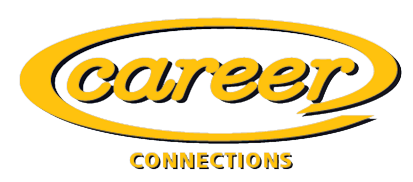The Career Connections Learning Management System (LMS) provides instructors with access to the entire Career Connections program including: One Trade, Many Careers; Project Book 1; Project Book 2; Project Books 3, Commercial and Residential Construction; Career Connections: Math for the Trades; Career Connections: Introduction to Millwrighting; Career Connections: Oxyfuel Cutting and Shielded Metal Arc Welding; and The Virtual Shop software program.
Having all the Career Connections components available allows schools and organizations to customize their programs to meet the needs of their students. In addition, the grade book feature streamlines the tracking of student skill level achievement and recordkeeping.
Instructors have access to the Career Connections: 1600 Question Objective Test Bank. Additional instructor resources provided online including lesson plans, grading rubrics, project evaluations, and project drawings.
The LMS student license gives students the ability to read assigned text, view the Virtual Shop videos, complete assessments, track their skill level progress, and view awarded badges.
Core makes up the math component of an effective high school trades curriculum. All of the math concepts are linked to real life situations in the world of construction work. This course offers a basic treatment of tech math beginning with general math, fractions, and decimals. Measurement and measurement tools, layout, area measure, and volume measure are all explained in detail with numerous exercises. A special effort has been made to set exercises in the context of real life technical work tasks.
The Carpentry Level 1 curriculum covers self-evaluation; goal setting; employability skills; specific career information on those trades within the carpentry craft; real-world-of-work descriptions of workers on the job; interviews and features that appeal to young adults.
Career Connections: Project Book 1 presents safety information and precautions, descriptions of tools and safe operating procedures, and descriptions of materials and fasteners. The book contains contains 15 step-by-step projects that require basic skills including the tote box, step stool, bird house, and storage chest.
The Teacher Annotated Edition contains Lesson Plans, suggested time frames for teaching, and page-by-page tips for teaching and using additional resources. The digital resources included with the Teacher Annotated Edition, contains all Lesson Plans, Grading Rubric for each project; Skills Matrix for all projects; and a Safety and Operation Checklist for evaluating student performance in the use of each tool.
Carpentry Level 2 is designed to let students practice an intermediate level of carpentry skills building useful objects. This course will review the safety practices and attitudes required to keep students and others from injury and the materials and tools from damage.
Career Connections: Project Book 2 reviews safety, tools, and materials information; contains 13 step-by step projects that require intermediate skills including the octagonal picnic table, skateboard ramp, Adirondack chair, and shed with a gable roof.
The Teacher Annotated Edition contains Lesson Plans, suggested time frames for teaching, and page-by-page tips for teaching and using additional resources. The digital resources included with the Teacher Annotated Edition contains all Lesson Plans, Grading Rubric for each project; Skills Matrix for all projects; and a Safety and Operation Checklist for evaluating student performance in the use of each tool.
Learning to work safely and efficiently on a construction jobsite requires skills and know-how gained through years of careful study and on-the-job experience. Acquiring the necessary skills and knowledge takes time, patience, and a lot of hard work. Carpentry Level 3 is broken up into two parts: Residential Construction and Commercial Construction.
Career Connections Project Book 3: Residential Construction and its companion volume Commercial Construction develops advanced building skills. Each books include a safety chapter unique to the type of construction environment it represents. Reviews of tools, materials, and fasteners are included at the points students will need a review before building. Lead Up exercises are also provided.
Procedures included are determining the partition layout; marking door and window openings; installing top and bottom track; establishing plumb; constructing a header; building an interior wall system; making and installing a soffit; assembling an equal slope hip roof; calculating and laying out a hip rafter; hanging and finishing drywall; installing ceilings.
Millwrights are unique because they learn a set of skills that can be applied to many different situations. These skills often require working with tools, including hand tools, power tools, and precision tools. Career Connections: Introduction to Millwrighting tells the student exactly what a millwright is and what the job responsibilities are and the industries that provide job opportunities.
Employability skills are covered. All of the toolbox and gangbox tools are described and illustrated. The math needed for millwrights to do their tasks is covered and examples are given.
Welding is a skill that is a subset of carpentry, millwrighting, pile driving, ironworking, pipefitting, and other building trades. Both Millwrights and Carpenters have a variety of jobs that require welding to achieve quality results. The job duties of welders are among the most critical of all the construction trades in building and maintaining industrial systems. Their job duties require a technical skill set necessary for installing and maintaining structures. Along with these technical skills, many job duties also require physical skills and other abilities. The most successful welders also possess skills that employers have identified as those that allow workers to excel in all types of job conditions. These are called employability skills and are discussed in this welding course.
Career Connections: Oxyfuel Cutting and Shielded Metal Arc Welding introduces students to welding and provides practice in basic welding skills. The book meets AWS guidelines for its high school SENSE program.
Safety is a primary emphasis of the book. Oxyfuel cutting is covered first. Welding equipment and weld symbols are also discussed along with an in-depth presentation of Shielded Metal Arc Welding (SMAW). Students are introduced to the job duties and employability skills required of the capable welder.
Hand-on projects are included to help students gain employable welding skills needed for high earning jobs in our trades.














